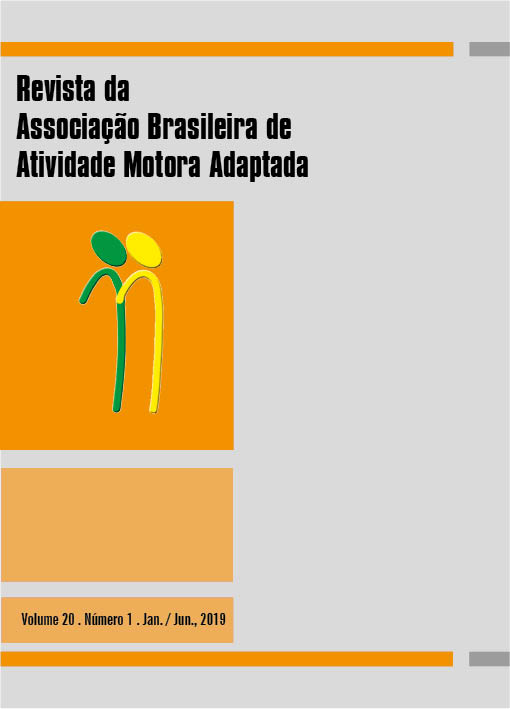BENEFITS OF SCHOOL PHYSICAL EDUCATION FOR THE DEVELOPMENT OF THE STUDENT WITH AID SPECTRUM DISORDER IN TEACHERS’ PERCEPTION
DOI:
https://doi.org/10.36311/2674-8681.2019.v20n1.08.p81Keywords:
Adapted motor activity, Physical Education., Inclusion, Autistic Spectrum DisorderAbstract
This is a study that investigates the school inclusion of students with autism spectrum disorder (ASD) from the perspective of physical education teachers. The TEA with several disorders that have some similar features. The person with TEA presents communication in social interaction and behavior. In addition, there is the need to maintain a routine of life, however, each person has your own feature. In the school context, more specifically in physical education classes, the teacher needs to be prepared to deal with students with TEA, the physical education stimulates the development of areas in which they have difficulties. Studies showed a lack of knowledge of professionals on this topic, pointing behind training and adequate training in physical education course. So, research on this theme are of extreme importance to the physical education professional learn how physical activity can be beneficial to develop every aspect of student development with TEA. In this sense, the study aimed to identify PEF perceptions about the benefits of school physical education for the development of students with Autistic Spectrum Disorder. The work comprises a descriptive research. The research project was submitted to the Ethics Committee of the College of higher education and training (FAEF). Survey respondents were 10 physical education teachers who work in the network of municipal education, with classes from 1stto 5thyear and provide classes for regular classes that have at least one student with TEA. In methodological terms, the researchers draw up a questionnaire to be auto filled by the participants, with opened questions related to themes: 1) perception of physical education teacher about the autistic spectrum disorder; and 2) benefits of physical education class for the development of the student with autism spectrum disorder. As a result, was sent to two judges-physical education professionals with experience in special education and in development of questionnaire to assess whether the questions draw up will help to answer the purpose of the research; and, if the writing is adequate. So, after the evaluation of the judges was prepared the second version of the questionnaire. After the PEF answering the questionnaire was analyzed each issue, where the PEF knew set TEA, reported the importance of the physical education classes for the general development of the student with TEA, however some negative issues were cited as the lack the diagnosis of student, school support and knowledge of PEF on the topic, in addition to missing responses more justified in each issue.
Received on: 06/28/2019
Accepted: 06/30/2019




